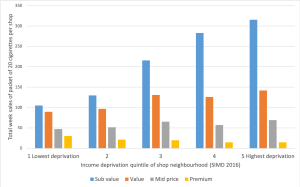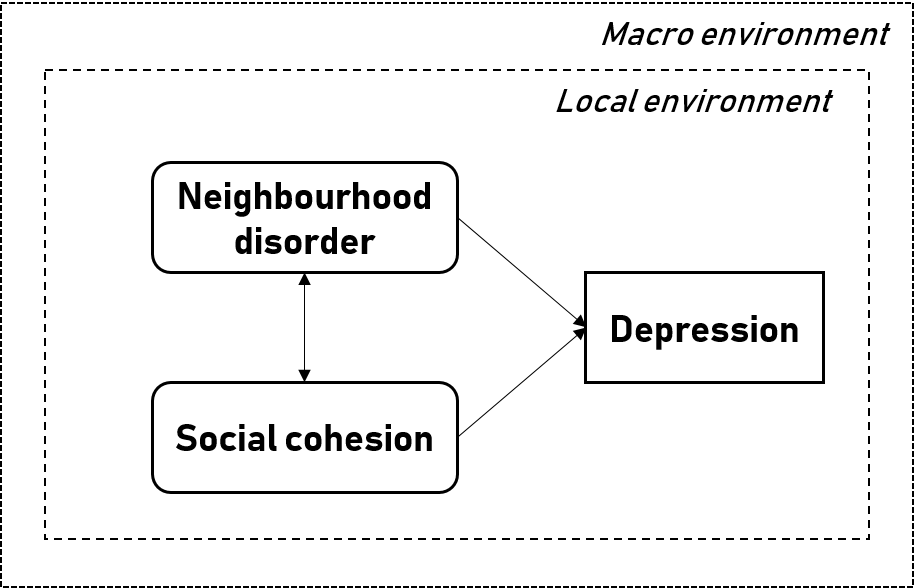The Scottish Government has committed to achieving a smoke-free generation by 2034. This ambitious goal has sparked debate about which measures will drastically reduce tobacco use and sales of tobacco products. One option is the introduction of a tobacco license scheme. A new study in Scotland from the SPECTRUM team shows that the introduction of a tobacco license scheme has the potential to disincentivise tobacco sales and reduce the availability of tobacco products.
In 2010, the Scottish Government introduced a registration system that was mandatory for businesses selling tobacco. However, there is no cost associated with registering to sell tobacco products. One option for helping to meet the smoke-free generation target is the introduction of a tobacco licensing scheme in Scotland.
A tobacco retail license is a regulatory mechanism that requires retailers to purchase a special license to legally sell tobacco products. Tobacco license schemes are crucial for monitoring sales of tobacco products, reducing illicit sales, and enforcing regulations such as sales prohibition to minors. By charging fees to obtain a license can increase the cost of selling tobacco, making the product more expensive for consumers and less profitable for retailers. Consequently, this can lead to reduced tobacco product availability as retailers may choose to diversify their business models away from tobacco. A tobacco retailer reduction has been widely associated with lower smoking prevalence and fewer tobacco-attributable diseases.
However, the implementation of license fees has faced challenges from retailers and the tobacco industry, who raise concerns about their impact on business profitability. Retailers also provide essential local services and if the introduction of a tobacco license fee undermines the viability of the business, then this could negatively impact local communities. Therefore, the public health benefits of fee-based license systems that reduces tobacco availability have to be considered against the potential financial impacts on retailers.
Although many countries worldwide have considered different forms of license schemes, little is known about the effectiveness of these different schemes in disincentivising tobacco sales and their financial impacts on retailers.
Simulating the implementation of a tobacco license fee in Scotland: a case of study
As part of the SPECTRUM Consortium we addressed this question by analysing data from over one million commercial transactions across 179 smaller retailers (convenience stores) in Scotland between 2019 and 2022. We found that stores generate an annual median of £15,859 revenue from tobacco sales. Retailers in the most deprived areas of Scotland received 1.6 times more revenue than those in low-deprivation neighbourhoods. Moreover, urban retailers obtained 2.3 times higher revenues than rural stores (see table 1 below).
| All Retailers | High deprived areas | Medium deprived areas | Low deprived areas | Urban areas | Rural areas | |
| Median Gross Revenues | £15,859 | £18,403 | £17,694 | £11,609 | £18,247 | £7,638 |
We found that the magnitude of the financial impacts of schemes on Scottish retailers varied in relation to the level at which the fee was set. For instance, adopting a low license fee similar to the one operating in New Brunswick, Canada, (a universal fee of CA$50/year, approximately £29/year), would result in a median tobacco revenue reduction of 0.18% among retailers in Scotland. However, if following Finland’s example of requiring a universal fee of €500/year (approximately £428/year) smaller retailers in Scotland would see their revenues reduced by 2.70% (see table 2 below). In both cases, the impacts of these licenses’ fees may not deter tobacco sales. In order to achieve a significant revenues reduction, such as a 30% reduction, would require a universal fee to be set at £4,758/year, which is substantially higher than those currently active in other countries.
Additionally, our results showed that each scheme type impacted differently on retailers located in different types of areas of the country. Universal and urban/rural flat fees would result in higher revenues reductions for retailers in low deprivation areas. Using a high-level universal fee (similar to Finland), results in a revenue reduction of 3.61% in low deprivation areas. This decline is more significant than the 2.70% reduction observed in high deprivation neighbourhoods. In contrast, volumetric schemes would lead to similar percent revenue reductions across all retailers.
| Fee scheme and level | All retailers | High Deprived | Medium deprived | Low deprived |
| Universal low: £29/yr | -0.18% | -0.16% | -0.17% | -0.25% |
| Universal medium:£139/yr | -0.88% | -0.76% | -0.79% | -1.20% |
| Universal high: £428/yr | -2.70% | -2.32% | -2.42% | -3.67% |
| Volumetric low: £0.06/1000 sticks | -0.18% | -0.18% | -0.18% | -0.18% |
| Volumetric medium: £0.29/1000 sticks | -0.86% | -0.87% | -0.89% | -0.87% |
| Volumetric high: £0.91/1000 sticks | -2.70% | -2.72% | -2.78% | -2.73% |
| Urban/Rural low: U=£33/yr R=£14/yr | -0.18% | -0.17% | -0.18% | -0.22% |
| Urban/Rural medium: U=£161/yr R=£67/yr | -0.88% | -0.83% | -0.86% | -1.07% |
| Urban/Rural high: U=£493 R=£206/yr | -2.70% | -2.53% | -2.65% | -3.27% |
Implications for Tobacco Control policies
These findings have implications for how we develop our approach to reducing tobacco harms in Scotland. Our study showed the potential of license fee schemes to disincentivise tobacco sales as they effectively increase the cost of selling tobacco. However, to significantly impact tobacco revenues and encourage retailers to diversify their business models away from tobacco sales, this policy would necessitate the implementation of relatively high-level fees.
The study described unequal financial impacts from each license scheme among retailers. The effectiveness of universal and urban/rural flat fees to reduce tobacco outlet availability could be questioned, as they would have a lower impact on retailers in high deprivation areas. These areas are typically targeted in tobacco control efforts since they present the highest densities of tobacco retailers and the worst smoking outcomes.
In contrast, volumetric fees could ensure an equal reduction of tobacco revenues across all retailers. Nevertheless, retailers with greater sales volume, more diversified business models (large retailers and supermarkets) or located in more profitable neighbourhoods (ie, urban areas) might have greater financial resources to cope with a given loss of 10% of their profits compared with other retailers.
Policymakers should carefully design and implement policies that maximise a reduction in tobacco outlet availability in all areas to mitigate smoking-related harms without threatening retail viability. One possible strategy in Scotland might include a modest flat fee, considering a lower fee in rural areas where retailers might be more vulnerable to potential shutdowns (ie, urban/rural scheme), along with an additional moderate volumetric fee.
Find out more about this study
The full study methods, findings and discussion of this study are published in Tobacco Control: “Geographical differences in the financial impacts of different forms of tobacco licence fees on small retailers in Scotland”.
About the author:
Roberto Valiente is postdoctoral researcher in Health and Environment at the Centre for Research on Environment, Society and Health (CRESH) and the SPECTRUM Consortium in the University of Edinburgh. His work is focused on the use of Geographic Information Systems to explore how the physical and social environment may shape population behaviours and health. His current research is focused on the study of commercial determinants of health from a spatial perspective, particularly those related with tobacco and alcohol issues.












